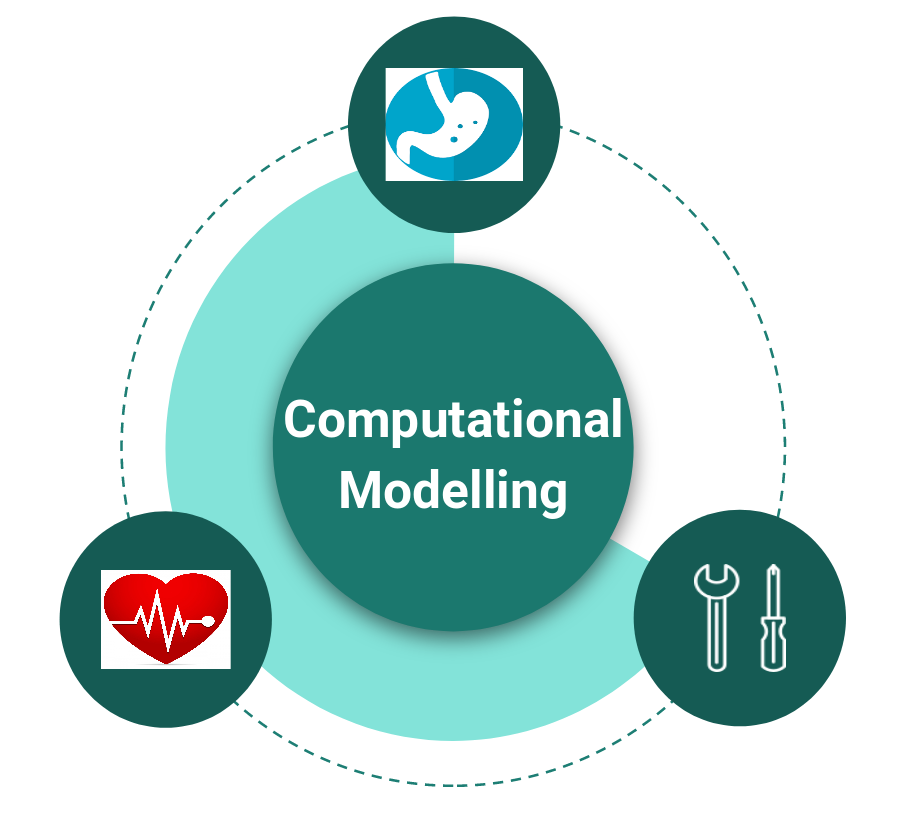Our research revolves around computational modelling of the gastrointestinal tract and the cardiovascular system. We are particularly interested in the electromechanical properties in health and diesease. We also actively develop some of the computational tools that we use in our research.

Modelling the gastrointestinal system
Gastrointestinal (GI) motility disorders are complex, heterogeneous, and poorly understood. Patients suffer from reduced quality of life and incur huge costs. Multi-scale computational models are important towards improving our understanding of motility disorders.
At celllar level, we have developed computational descriptions of the electrophysiology of the major cell types involved in the events that lead to muscular contraction
- Interstitial cells of Cajal (ICC)
- Smooth muscle cells (SMC) in the stomach, jejunum and colon
- Platelet-derived growth factor receptor alpha-positive (PDGFRα+) cells
- Inihibitory colonic neurotransmission
At the organ level, we actively develop finite element models and whole organ simulations. We proposed and used the extended bidomain framework to model tissues with heterogeneous cell types. Moreover, we developed a viscoelastic material law suitable for biomechanical simulations of gastrintestinal tissues.

Modelling the cardiovascular system
Having its origins in the 1960s, cardiac modelling is now considered a rather mature research field and one where computational modelling of physiology has been most successful. Many mathematical descriptions of cardiac activity exist, ranging from protein-level to whole-organ models. The Computational Bioengineering Laboratory has a strong background in the development and utilisation of mathematical and computational models of various aspects of cardiac physiology. We are interested in building a multi-scale modelling framework that may help in predicting the potential adverse side effects of a drug on the heart as well as helping the diagnosis of cardiac electrophysiological disturbances.
In particular, we are interested in
- The forward and inverse problems of electrocardiography
- Using models to predict adverse cardiac side effects of drugs
- Electrophysiology of the Purkinje system

Computational Tools
We have developed a robust nonlinear optimization software (see our Software section) that is suitable for data fitting. We also contributed to the development of the Oxford Unversity C++ finite element solver (Chaste).
